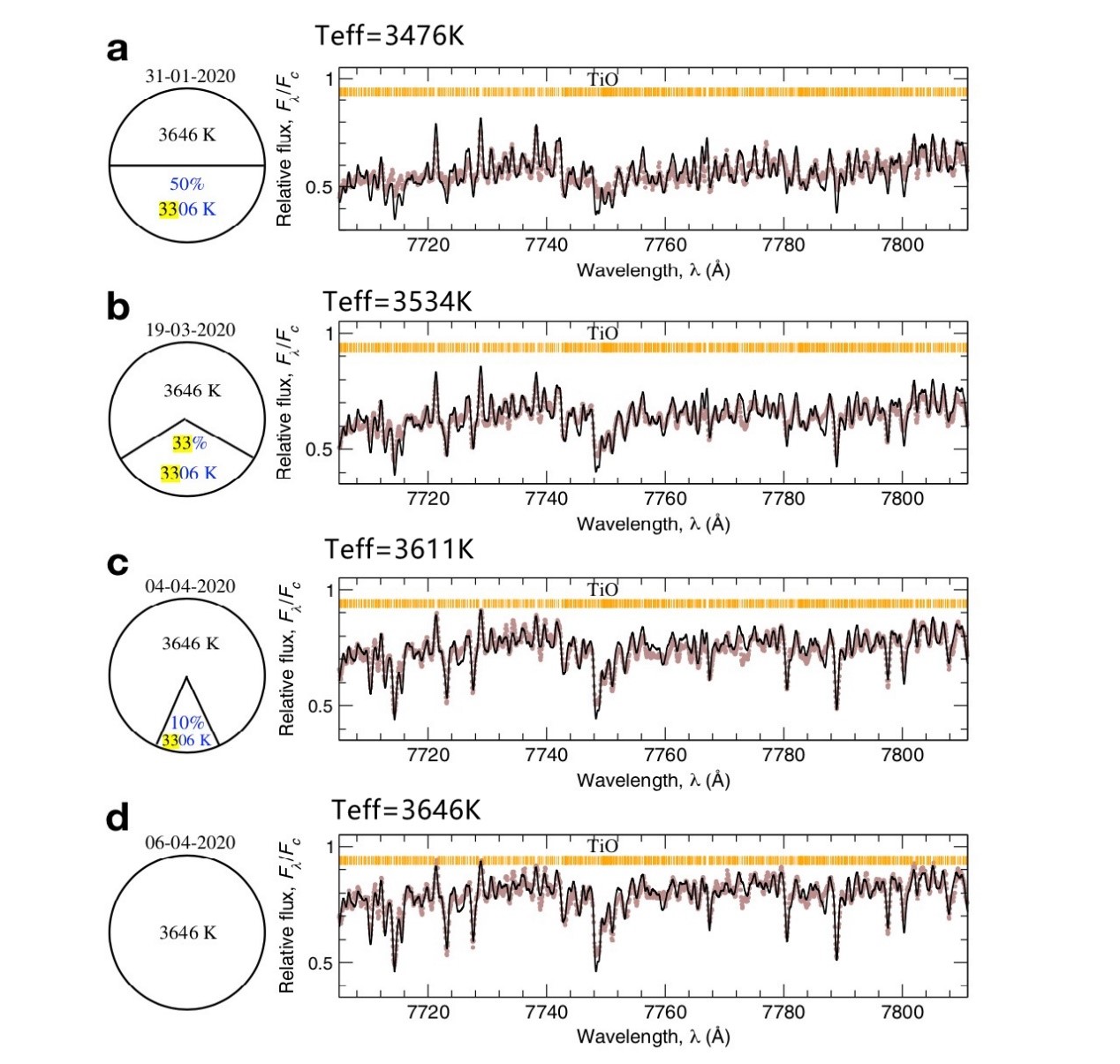A new study led by Prof. Gang ZHAO from National Astronomical Observatories of Chinese Academy of Sciences (NAOC) sheds light on the nature of the mysterious dimming of Betelgeuse. This study was published online in Nature Communications on August 5th, 2021.
Scientists from Shandong University and the University of Missouri (USA) also joined this study. “Betelgeuse (α Orionis) is the bright reddish star located in the shoulder of the Orion constellation and can be seen by naked eye in the night sky” [1] (see figure 1). “From October 2019 to March 2020, Betelgeuse demonstrated a mysterious dimming, capturing the attention and imagination of both astronomers and the public alike.
While being a variable star that exhibits periodic and sometimes irregular light change, this dimming is the most significant observed in the last 50 years. It became fainter by more than 2.5 times, which even can be noticed by naked eye in the night sky.
Several scenarios have been put forward by astronomers around the world: pre-phase of supernova explosion, obscuring dust, or changes in the photosphere of the star. ”[1]

Figure 1: During the end of 2019 and the beginning of 2020, Betelgeuse (α Orionis) became fainter by more than 2.5 times and this is the most significant dimming observed in the recent decades. (Credit: Alena ALEXEEVA and Da-Yong REN)
The science team investigated the high-resolution near-infrared spectra of Betelgeuse, covering the dimming and post-dimming phases, obtained from the Weihai Observatory of Shandong University using the WES developed by Nanjing Institute of Astronomical Optics & Technology (NIAOT).
The team also developed a special technique based on the measurement of TiO (titanium oxide) and CN (cyanide) molecular lines in stellar spectra for determining the effective temperatures of red supergiants."We have found that at the minimum of its luminosity, the effective temperature of Betelgeuse on 2020 January 31st was 3476 Kelvins. However, after it recovered its brightness, on 2020 April 6th, the effective temperature was 3646 Kelvins.
The changing of the effective temperature by 170 K is sufficient to explain this mysterious dimming," said Dr. Sofya ALEXEEVA, the first author of this study. The reference results can be found in figure 2.

Figure 2: The schemes of the stellar surface with a dark spot and the corresponding best fits of the narrow spectral region 7705–7811 ? for four dates of observations. The temperature increasing is interpreted as the changing of the surface area of a dark spot. Relative flux is calculated as a ratio of the flux at a particular wavelength (Fλ) to the flux in continuum (Fc)[2].
WES is the first fiber-fed high-resolution spectrograph for astronomical observation developed by NIAOT in China and it finished the acceptance review on January 6, 2011. WES was installed on the 1-m telescope at Weihai Observatory of Shandong University.
It is primarily used for chemical abundance and asteroseismology studies of nearby bright stars, as well as radial velocity (RV) detections for exoplanets. The optical design of WES is based on the widely demonstrated and well-established white-pupil concept.
WES adopts a fiber-fed mode and is installed in a very stable environment. The environment and mechanical design focus on holding the temperature constant and avoiding mechanical vibrations, which are critical for the high accuracy and stability of wavelength calibration. A single exposure of WES covers the spectral region 371–1100 nm and the spectral resolution changes from 40,000 to 60,000 through adjusting the entrance slit width.
Figure 3 shows the WES photo[3] and the original spectra of Betelgeuse.


Figure 3: Left: The photo of the WES and it’s subsystem[3];Right: The spectra of Betelgeuse obtained by WES (Credit: Dong-Yang GAO)
The DOI for this paper is at https://doi.org/10.1038/s41467-021-25018-3, which is available online at http://www.nature.com/ncomms
References:
【1】NAOC: New Study Sheds Light on the Mysterious Dimming of Betelgeuse
【2】Alexeeva, S., Zhao, G., Gao, DY. et al. Spectroscopic evidence for a large spot on the dimming Betelgeuse. Nat Commun 12, 4719 (2021). https://doi.org/10.1038/s41467-021-25018-3
【3】Gao, D.-Y., Ji, H.-X., Cao C. et al. WES—Weihai Echelle spectrograph. Public. ASP128, 125002 (2016).